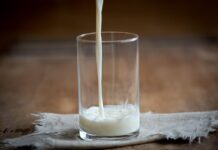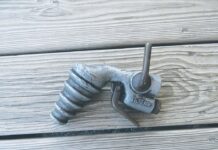Although we welcomed the rain this summer, it has created the problem of lower quality hay crop forages and maybe a shortage of forage for many dairy producers.
Now would be the time to get out that Dairy Excel book and review the “planning function of management.”
What are you going to do for the next nine months until a new crop of haylage is available? Are you going to purchase dry hay and from where?
If you are, you might determine your needs and get it purchased now before it becomes scarce and high priced in mid-winter.
It’s about the nutrients. As Drs. Bill Weiss and Normand St-Pierre say, cows don’t require long, dry hay. They require nutrients of protein, energy, vitamins, minerals, neutral detergent fiber (NDF) and effective fiber.
These can be furnished by a combination of different feedstuffs. Weiss suggested in a Buckeye Dairy newsletter that adjustments be made in ration formulation to account for lower forage quality.
Rations should be formulated to contain adequate but not excessive concentrations of NDF (usually between 18 percent and 21 percent of dietary dry matter).
High NDF. High concentrations of forage NDF in diets reduce dry matter intake and milk production. The weather this year has caused increased NDF levels of the hay crop on a lot of farms.
If forages have high NDF, diets should contain less of that forage.
For example, if corn silage makes up 25 percent of dietary dry matter and has 44 percent NDF, it will provide 11 percent forage NDF (.25 x 44).
If alfalfa has 40 percent NDF and the diet target is 21 percent forage NDF, the diet should contain 25 percent alfalfa (21 percent-11 percent from corn silage – 10; 10/0.40 = 25 percent alfalfa). If the alfalfa contained 50 percent NDF, then the diet should contain 20 percent alfalfa (21-11=10; 10/0.5 = 20 percent).
Boost protein. You will have to increase the protein to compensate for less alfalfa.
Looking at this alternative, it might mean that you will need to harvest more corn silage. Corn silage can be an excellent forage to supply both NDF and effective fiber.
If you do not have enough of your own corn for silage, purchasing some from a neighbor may be a better buy than dry hay.
Feeding lower quality. Additional planning to feed low quality hay crop forages is also suggested by Weiss.
If possible, feed lower quality forages to animals with lower nutrient needs, such as growing heifers and late lactation cows.
Feed early lactation cows the highest quality forage available on the farm.
If forage quality is poor because of high NDF concentrations, reduce the amount of forage in the diet but ensure that the diet still contains adequate NDF. Diets with more than 25 percent of the dry matter as forage NDF usually reduce intake.
If forage quality is poor because of a bad fermentation (wet silage), reduce the amount of that particular silage in the diet. Neutralization of the acids in wet silage with sodium bicarbonate may help increase intake.
Watch for mold. If forage quality is poor because of mold, intake may be poor and toxicity risks are possible. Do not feed moldy feed to high producing cows.
Be sure to have the forages analyzed. Forages with NDF levels more than 44 percent for alfalfa and more than 53 percent for grasses can reduce intake and milk production.
Once effective fiber levels are met in the diet, additional feeds can be purchased that can supply NDF besides hay.
Looking back. Once you have planned your mode of action for feeding the cows this winter, don’t forget the “controlling function of management” to monitor the results in the herd.
If performance is not what you expect, then corrective action should be taken.
Evaluating what you have planned is an important function to the success of the program.
(The author is a dairy agent for OSU Extension in Wayne County. Questions or comments can be sent in care of Farm and Dairy, P.O. Box 38, Salem, OH 44460.)
Get 4 Weeks of Farm and Dairy Home Delivered












